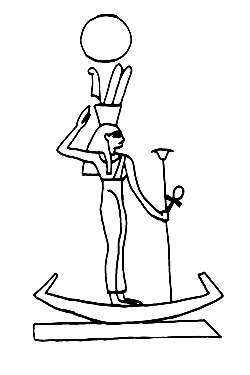
The Greek name for the goddess called Sopdet by the Egyptians. She was the personification of Sirius, the Dog Star. This star, after a long period of invisibility, reappeared again in the sky just when the Nile innundation was about to begin - the so-called heliacal rising of Sirius. The start of the new year, heralded by the rising of the waters, was linked with this 'going forth of Sothis' and led to the goddess being called 'lady of the new year'. On the basis of a depiction on an ivory tablet from the 1st Dynasty, which shows Sothis in the form of a cow with a plant between its horns, it has been concluded that at this early time already, a relationship was seen between the arrival of the goddess and the new year. Only once in every 1,460 years did the heliacal rising of Sirius coincide with the start of the solar year. Such a event occurred during the reign of Antoninus Pius in 139 AD. Taking this as a starting point, it can be calculated that earlier concurrences took place in 1,321 BC and in 2,781 BC. As we also have records of the phenomenon from the reigns of Senwosret III and Amenhotep I/Thutmosis III, this makes it possible to draw up a more precise chronology of Egyptian history. Sothis was often mentioned as a member of a triad, with her husband the god Sah (the personification of the constellation of Orion) and the child, the god Soped. Parallels link the three divinities with Osiris, Isis and Horus. As early as the Pyramid Texts, it is stated that Sothis united with Osiris and then gave birth to the morning star. Sothis is usually depicted as a woman with a star on her head, and sometimes also cow's horns, copying Isis who in turn had adopted this attribute from Hathor.